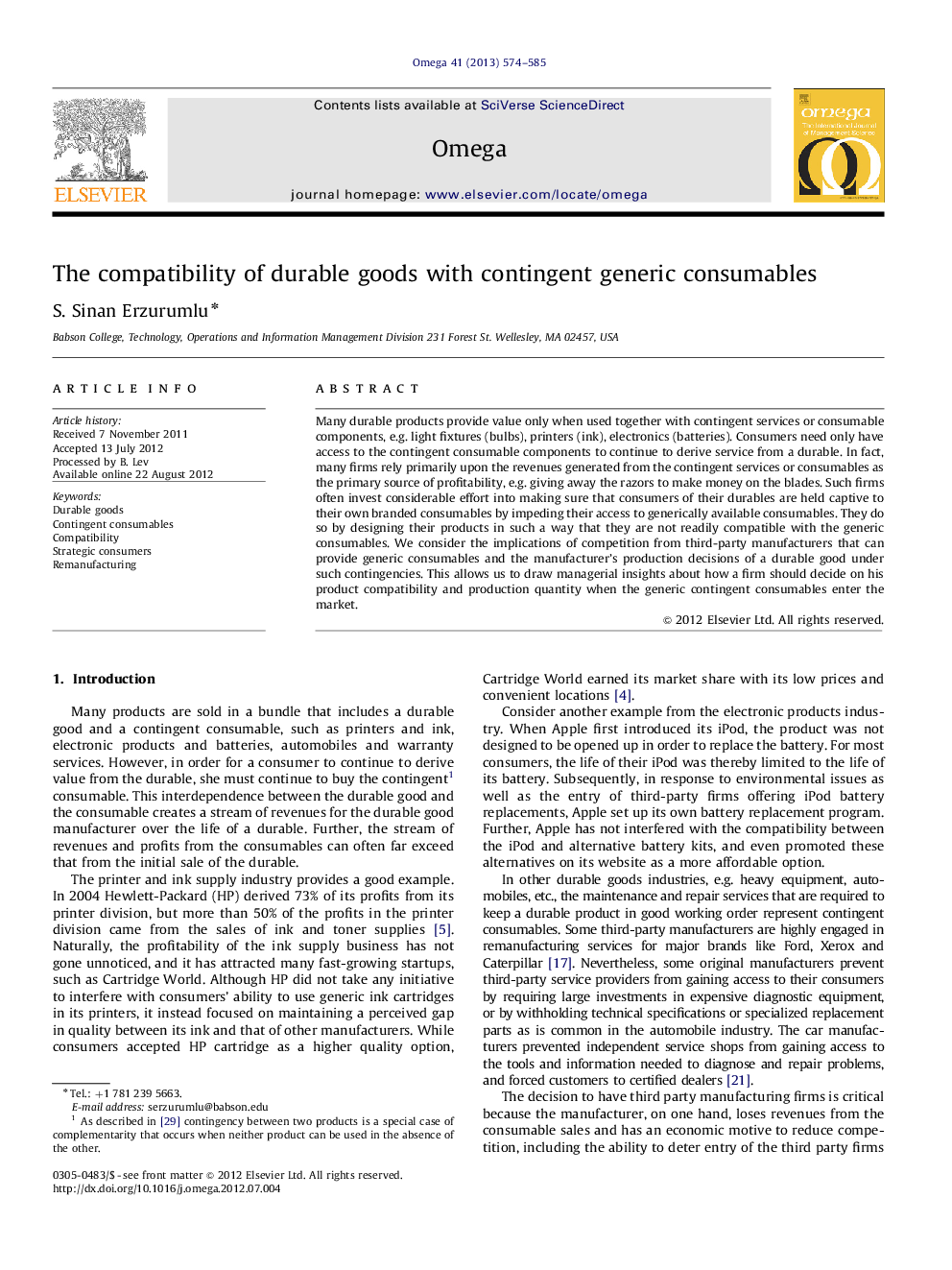| Article ID | Journal | Published Year | Pages | File Type |
|---|---|---|---|---|
| 1032560 | Omega | 2013 | 12 Pages |
Many durable products provide value only when used together with contingent services or consumable components, e.g. light fixtures (bulbs), printers (ink), electronics (batteries). Consumers need only have access to the contingent consumable components to continue to derive service from a durable. In fact, many firms rely primarily upon the revenues generated from the contingent services or consumables as the primary source of profitability, e.g. giving away the razors to make money on the blades. Such firms often invest considerable effort into making sure that consumers of their durables are held captive to their own branded consumables by impeding their access to generically available consumables. They do so by designing their products in such a way that they are not readily compatible with the generic consumables. We consider the implications of competition from third-party manufacturers that can provide generic consumables and the manufacturer’s production decisions of a durable good under such contingencies. This allows us to draw managerial insights about how a firm should decide on his product compatibility and production quantity when the generic contingent consumables enter the market.
► Many durable goods provide value when used with contingent services or consumables. ► While generic substitutes create competition, they may generate value for used durables. ► We study the compatibility of a branded durable good with rival generic consumables. ► The compatibility decision depends on the deterioration rate of the durable and production costs. ► The manufacturer may be better off with a generics industry with high quality-to-cost ratio.
